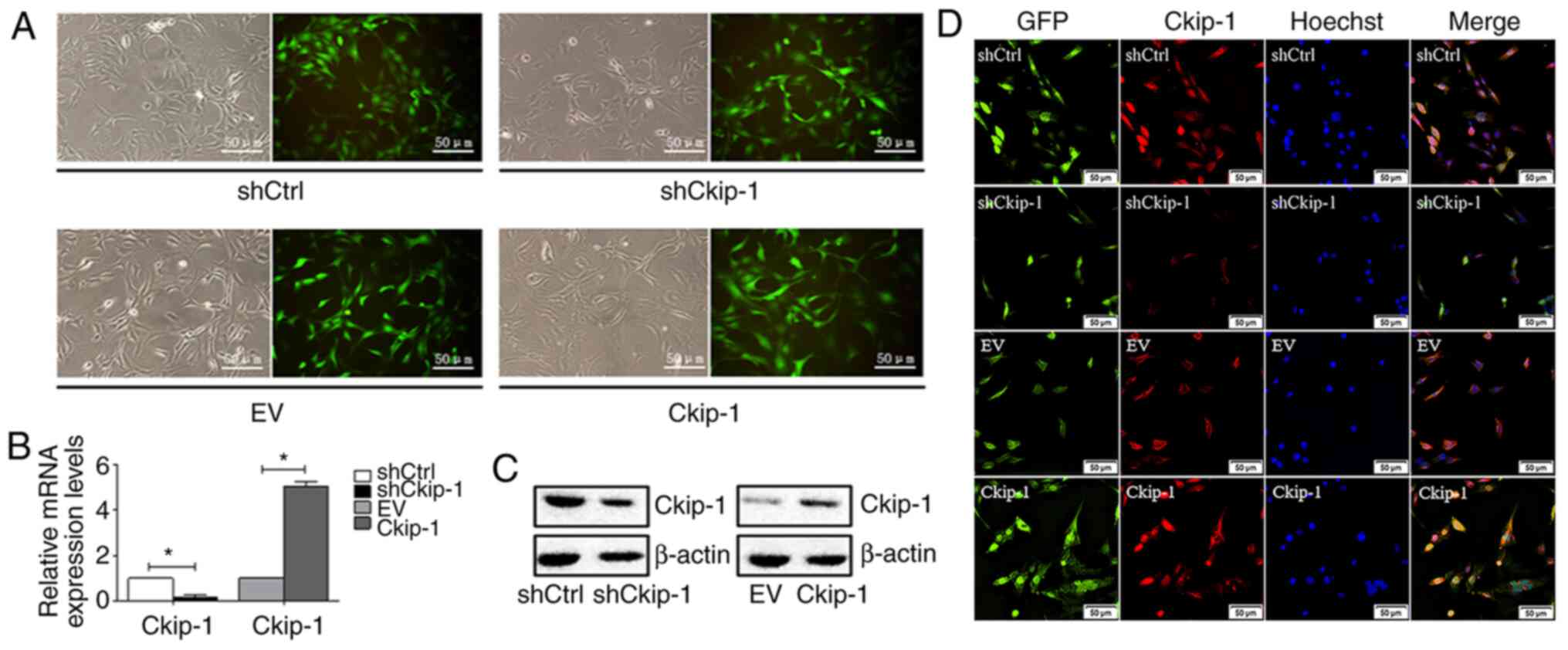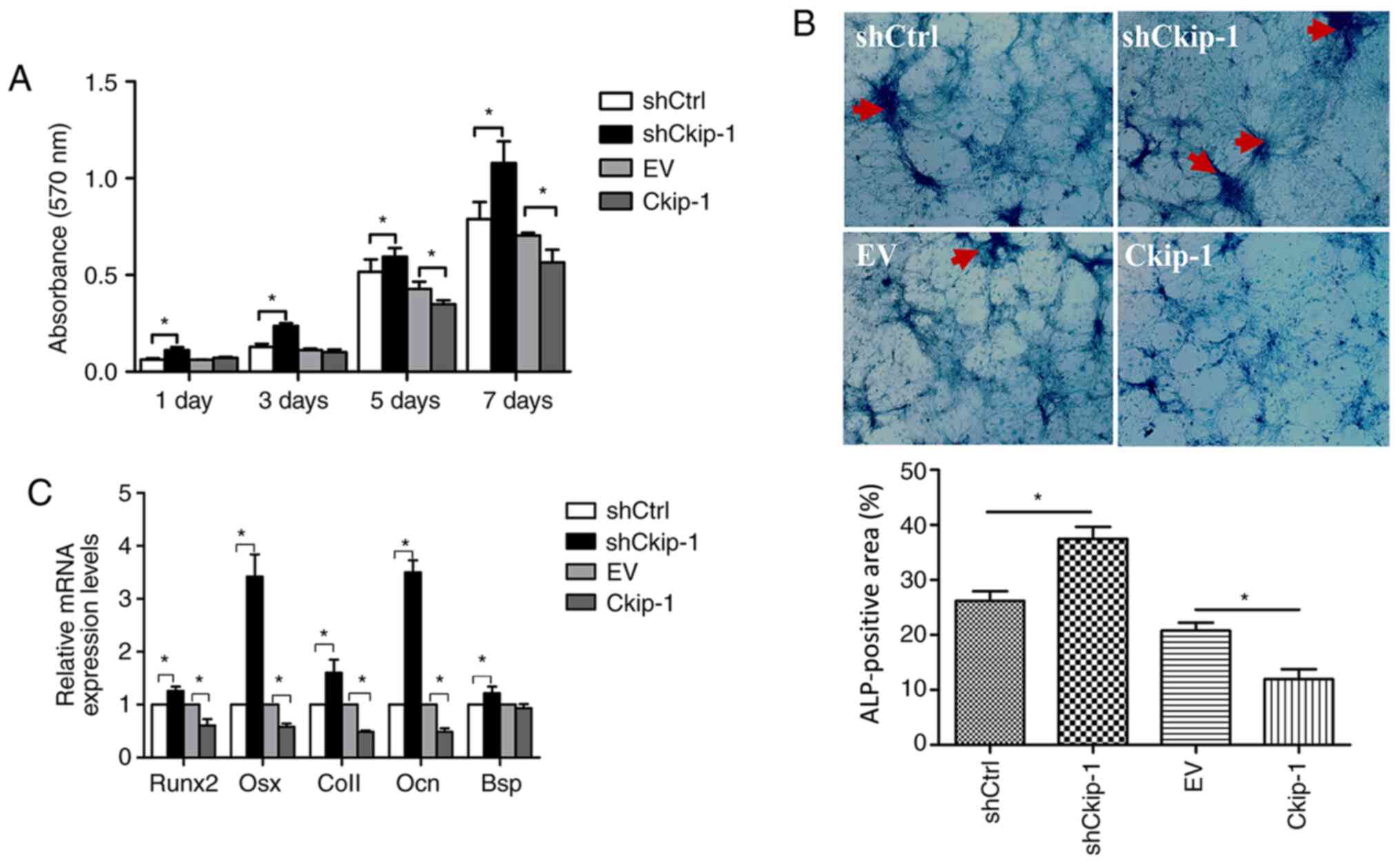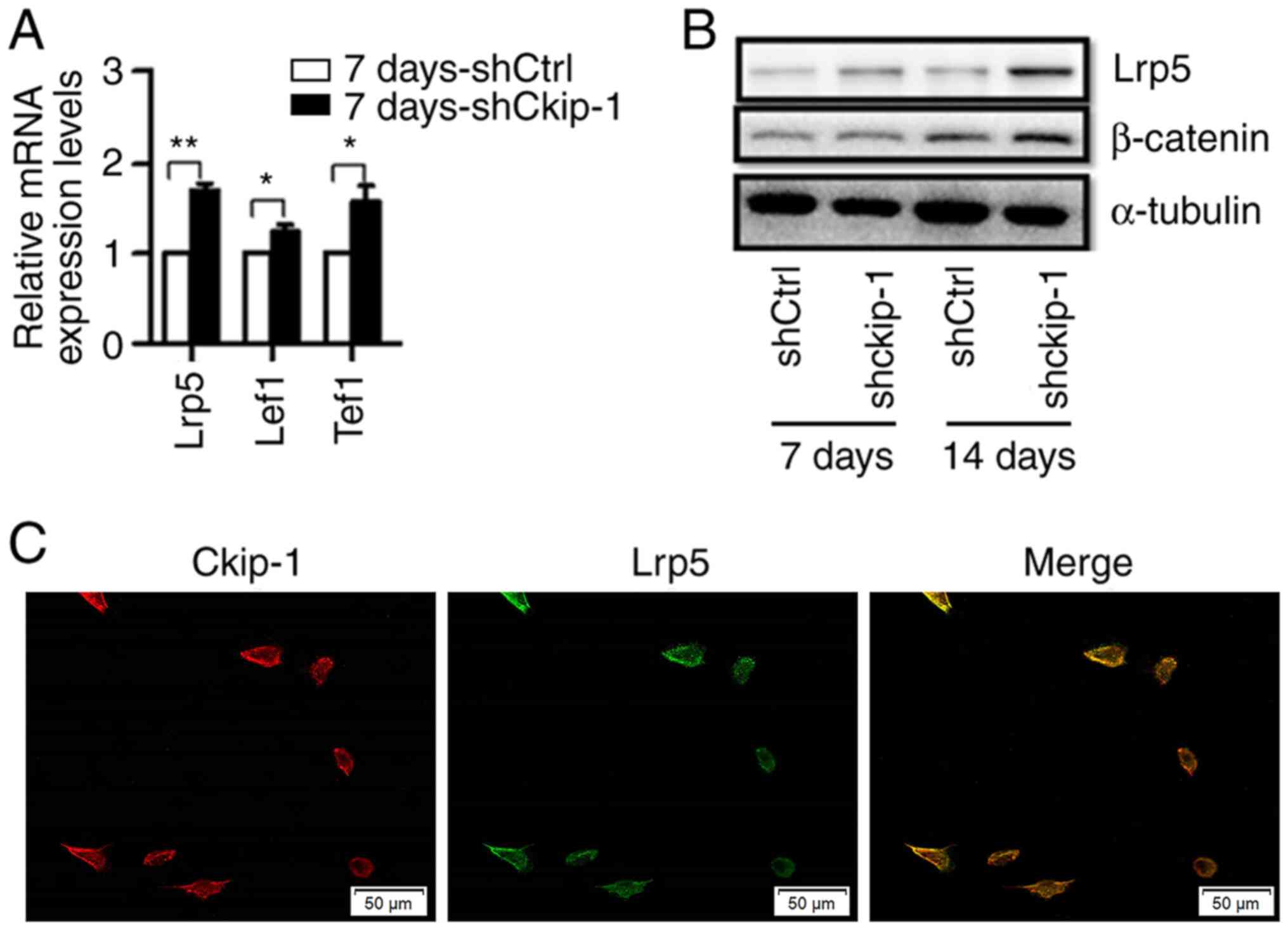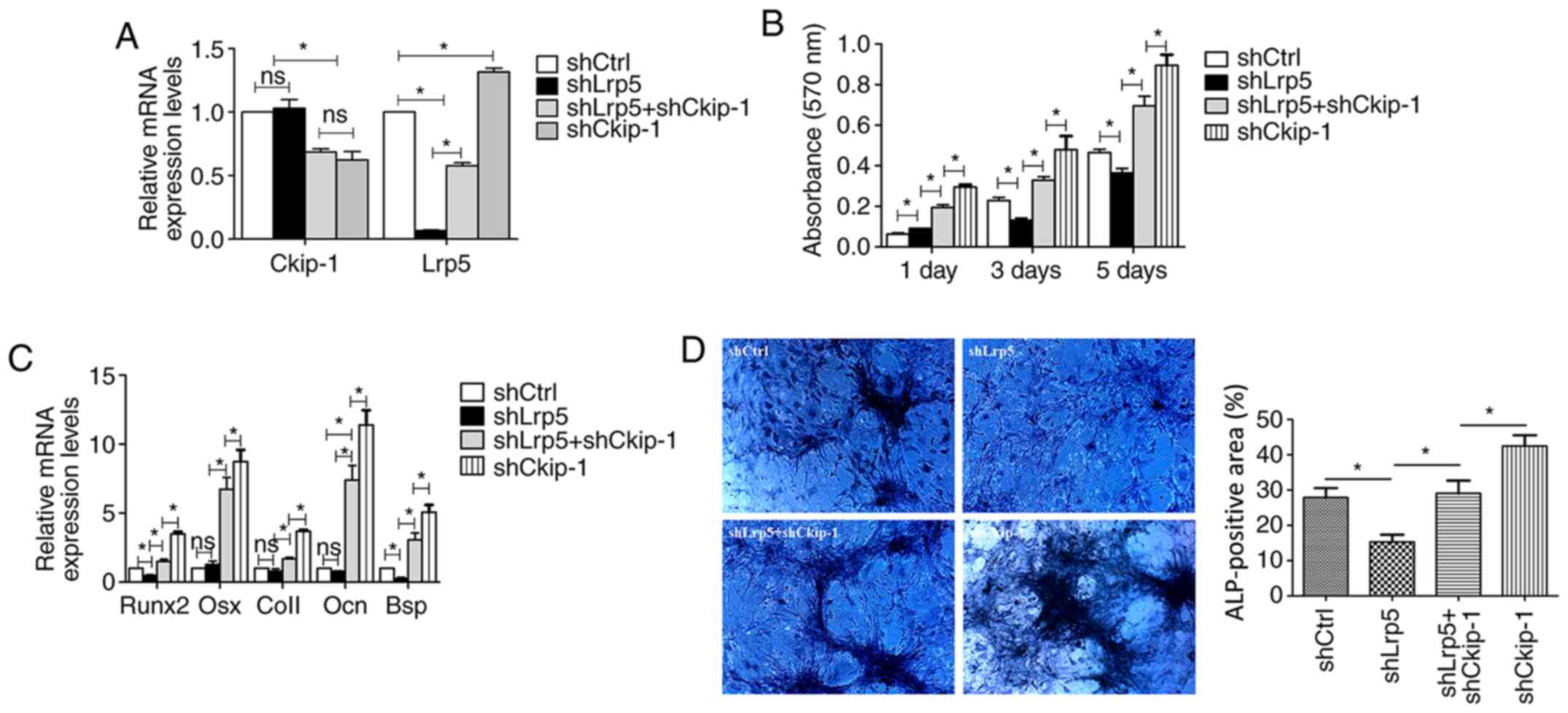|
1
|
Li L, Lu H, Zhao Y, Luo J, Luo J, Yang L,
Liu W and He Q: Functionalized cell-free scaffolds for bone defect
repair inspired by self-healing of bone fractures: A review and new
perspectives. Mater Sci Eng C Mater Biol Appl. 98:1241–1251.
2019.PubMed/NCBI View Article : Google Scholar
|
|
2
|
Liu M and Lv Y: Reconstructing bone with
natural bone graft: A review of in vivo studies in bone defect
animal model. Nanomaterials (Basel). 8(E999)2018.PubMed/NCBI View Article : Google Scholar
|
|
3
|
Wei X, Liu B, Liu G, Yang F, Cao F, Dou X,
Yu W, Wang B, Zheng G, Cheng L, et al: Mesenchymal stem cell-loaded
porous tantalum integrated with biomimetic 3D collagen-based
scaffold to repair large osteochondral defects in goats. Stem Cell
Res Ther. 10(72)2019.PubMed/NCBI View Article : Google Scholar
|
|
4
|
Chen X, Fan H, Deng X, Wu L, Yi T, Gu L,
Zhou C, Fan Y and Zhang X: Scaffold structural microenvironmental
cues to guide tissue regeneration in bone tissue applications.
Nanomaterials (Basel). 8(E960)2018.PubMed/NCBI View Article : Google Scholar
|
|
5
|
White KA and Olabisi RM: Spatiotemporal
control strategies for bone formation through tissue engineering
and regenerative medicine approaches. Adv Healthc Mater.
8(e1801044)2019.PubMed/NCBI View Article : Google Scholar
|
|
6
|
El-Rashidy AA, Roether JA, Harhaus L,
Kneser U and Boccaccini AR: Regenerating bone with bioactive glass
scaffolds: A review of in vivo studies in bone defect models. Acta
Biomater. 62:1–28. 2017.PubMed/NCBI View Article : Google Scholar
|
|
7
|
Leyendecker Junior A, Gomes Pinheiro CC,
Lazzaretti Fernandes T and Franco Bueno D: The use of human dental
pulp stem cells for in vivo bone tissue engineering: A systematic
review. J Tissue Eng. 9(2041731417752766)2018.PubMed/NCBI View Article : Google Scholar
|
|
8
|
Wehner D and Weidinger G: Signaling
networks organizing regenerative growth of the zebrafish fin.
Trends Genet. 31:336–343. 2015.PubMed/NCBI View Article : Google Scholar
|
|
9
|
Ren L, Chen H, Song J, Chen X, Lin C,
Zhang X, Hou N, Pan J, Zhou Z, Wang L, et al: MiR-454-3p-mediated
Wnt/β-catenin signaling antagonists suppression promotes breast
cancer metastasis. Theranostics. 9:449–465. 2019.PubMed/NCBI View Article : Google Scholar
|
|
10
|
Yuan K, Shamskhou EA, Orcholski ME, Nathan
A, Reddy S, Honda H, Mani V, Zeng Y, Ozen MO, Wang L, et al: Loss
of endothelial derived WNT5A is associated with reduced pericyte
recruitment and small vessel loss in pulmonary arterial
hypertension. Circulation. 139:1710–1724. 2019.PubMed/NCBI View Article : Google Scholar
|
|
11
|
Gong B, Shen W, Xiao W, Meng Y, Meng A and
Jia S: The Sec14-like phosphatidylinositol transfer proteins
Sec14l3/SEC14L2 act as GTPase proteins to mediate
Wnt/Ca2+ signaling. Elife. 6(e26362)2017.PubMed/NCBI View Article : Google Scholar
|
|
12
|
Baron R and Kneissel M: WNT signaling in
bone homeostasis and disease: From human mutations to treatments.
Nat Med. 19:179–192. 2013.PubMed/NCBI View
Article : Google Scholar
|
|
13
|
Taipaleenmäki H, Abdallah BM, Aldahmash A,
Säämänen AM and Kassem M: Wnt signalling mediates the cross-talk
between bone marrow derived pre-adipocytic and pre-osteoblastic
cell populations. Exp Cell Res. 317:745–756. 2011.PubMed/NCBI View Article : Google Scholar
|
|
14
|
Day TF, Guo X, Garrett-Beal L and Yang Y:
Wnt/beta-catenin signaling in mesenchymal progenitors controls
osteoblast and chondrocyte differentiation during vertebrate
skeletogenesis. Dev Cell. 8:739–750. 2005.PubMed/NCBI View Article : Google Scholar
|
|
15
|
D'Alimonte I, Lannutti A, Pipino C, Di
Tomo P, Pierdomenico L, Cianci E, Antonucci I, Marchisio M, Romano
M, Stuppia L, et al: Wnt signaling behaves as a ‘master regulator’
in the osteogenic and adipogenic commitment of human amniotic fluid
mesenchymal stem cells. Stem Cell Rev Rep. 9:642–654.
2013.PubMed/NCBI View Article : Google Scholar
|
|
16
|
Zuo R, Liu M, Wang Y, Li J, Wang W, Wu J,
Sun C, Li B, Wang Z, Lan W, et al: BM-MSC-derived exosomes
alleviate radiation-induced bone loss by restoring the function of
recipient BM-MSCs and activating Wnt/β-catenin signaling. Stem Cell
Res Ther. 10(30)2019.PubMed/NCBI View Article : Google Scholar
|
|
17
|
Fan J, An X, Yang Y, Xu H, Fan L, Deng L,
Li T, Weng X, Zhang J and Zhao RC: MiR-1292 targets FZD4 to
regulate senescence and osteogenic differentiation of stem cells in
TE/SJ/mesenchymal tissue system via the Wnt/β-catenin pathway.
Aging Dis. 9:1103–1121. 2018.PubMed/NCBI View Article : Google Scholar
|
|
18
|
Williams BO: LRP5: From bedside to bench
to bone. Bone. 102:26–30. 2017.PubMed/NCBI View Article : Google Scholar
|
|
19
|
Li T, Li H, Wang Y, Li T, Fan J, Xiao K,
Zhao RC and Weng X: microRNA-23a inhibits osteogenic
differentiation of human bone marrow-derived mesenchymal stem cells
by targeting LRP5. Int J Biochem Cell Biol. 72:55–62.
2016.PubMed/NCBI View Article : Google Scholar
|
|
20
|
Borrell-Pagès M, Romero JC and Badimon L:
LRP5 deficiency down-regulates Wnt signalling and promotes aortic
lipid infiltration in hypercholesterolaemic mice. J Cell Mol Med.
19:770–777. 2015.PubMed/NCBI View Article : Google Scholar
|
|
21
|
Semenov MV and He X: LRP5 mutations linked
to high bone mass diseases cause reduced LRP5 binding and
inhibition by SOST. J Biol Chem. 281:38276–38284. 2006.PubMed/NCBI View Article : Google Scholar
|
|
22
|
Nie J, Liu L, He F, Fu X, Han W and Zhang
L: CKIP-1: A scaffold protein and potential therapeutic target
integrating multiple signaling pathways and physiological
functions. Ageing Res Rev. 12:276–281. 2013.PubMed/NCBI View Article : Google Scholar
|
|
23
|
Lu K, Yin X, Weng T, Xi S, Li L, Xing G,
Cheng X, Yang X, Zhang L and He F: Targeting WW domains linker of
HECT-type ubiquitin ligase Smurf1 for activation by CKIP-1. Nat
Cell Biol. 10:994–1002. 2008.PubMed/NCBI View
Article : Google Scholar
|
|
24
|
Livak KJ and Schmittgen TD: Analysis of
relative gene expression data using real-time quantitative PCR and
the 2(-Delta Delta C(T)) method. Methods. 25:402–408.
2001.PubMed/NCBI View Article : Google Scholar
|
|
25
|
Chen BY, Wang X, Chen LW and Luo ZJ:
Molecular targeting regulation of proliferation and differentiation
of the bone marrow-derived mesenchymal stem cells or mesenchymal
stromal cells. Curr Drug Targets. 13:561–571. 2012.PubMed/NCBI View Article : Google Scholar
|
|
26
|
Lee DJ, Kwon J, Current L, Yoon K, Zalal
R, Hu X, Xue P and Ko CC: Osteogenic potential of mesenchymal stem
cells from rat mandible to regenerate critical sized calvarial
defect. J Tissue Eng. 10(2041731419830427)2019.PubMed/NCBI View Article : Google Scholar
|
|
27
|
Moore ER and Jacobs CR: The primary cilium
as a signaling nexus for growth plate function and subsequent
skeletal development. J Orthop Res. 36:533–545. 2018.PubMed/NCBI View Article : Google Scholar
|
|
28
|
Reznikoff CA, Brankow DW and Heidelberger
C: Establishment and characterization of a cloned line of C3H mouse
embryo cells sensitive to postconfluence inhibition of division.
Cancer Res. 33:3231–3238. 1973.PubMed/NCBI
|
|
29
|
Hashimi SM: Exogenous noggin binds the
BMP-2 receptor and induces alkaline phosphatase activity in
osteoblasts. J Cell Biochem. 120:13237–13242. 2019.PubMed/NCBI View Article : Google Scholar
|
|
30
|
Li D, Zhu H, Liang C, Li W, Xing G, Ma L,
Ding L, Zhang Y, He F and Zhang L: CKIP-1 suppresses the
adipogenesis of mesenchymal stem cells by enhancing
HDAC1-associated repression of C/EBPα. J Mol Cell Biol. 6:368–379.
2014.PubMed/NCBI View Article : Google Scholar
|
|
31
|
Safi A, Vandromme M, Caussanel S, Valdacci
L, Baas D, Vidal M, Brun G, Schaeffer L and Goillot E: Role for the
pleckstrin homology domain-containing protein CKIP-1 in
phosphatidylinositol 3-kinase-regulated muscle differentiation. Mol
Cell Biol. 24:1245–1255. 2004.PubMed/NCBI View Article : Google Scholar
|
|
32
|
Zhang L, Xing G, Tie Y, Tang Y, Tian C, Li
L, Sun L, Wei H, Zhu Y and He F: Role for the pleckstrin homology
domain-containing protein CKIP-1 in AP-1 regulation and apoptosis.
EMBO J. 24:766–778. 2005.PubMed/NCBI View Article : Google Scholar
|
|
33
|
Bosc DG, Graham KC, Saulnier RB, Zhang C,
Prober D, Gietz RD and Litchfield DW: Identification and
characterization of CKIP-1, a novel pleckstrin homology
domain-containing protein that interacts with protein kinase CK2. J
Biol Chem. 275:14295–14306. 2000.PubMed/NCBI View Article : Google Scholar
|
|
34
|
Kato M, Patel MS, Levasseur R, Lobov I,
Chang BHJ, Glass DA II, Hartmann C, Li L, Hwang TH, Brayton CF, et
al: Cbfa1-independent decrease in osteoblast proliferation,
osteopenia, and persistent embryonic eye vascularization in mice
deficient in Lrp5, a Wnt coreceptor. J Cell Biol. 157:303–314.
2002.PubMed/NCBI View Article : Google Scholar
|
|
35
|
Cui Y, Niziolek PJ, MacDonald BT, Zylstra
CR, Alenina N, Robinson DR, Zhong Z, Matthes S, Jacobsen CM, Conlon
RA, et al: Lrp5 functions in bone to regulate bone mass. Nat Med.
17:684–691. 2011.PubMed/NCBI View
Article : Google Scholar
|
|
36
|
Hu H, Hilton MJ, Tu X, Yu K, Ornitz DM and
Long F: Sequential roles of Hedgehog and Wnt signaling in
osteoblast development. Development. 132:49–60. 2005.PubMed/NCBI View Article : Google Scholar
|
|
37
|
Hill TP, Später D, Taketo MM, Birchmeier W
and Hartmann C: Canonical Wnt/beta-catenin signaling prevents
osteoblasts from differentiating into chondrocytes. Dev Cell.
8:727–738. 2005.PubMed/NCBI View Article : Google Scholar
|













